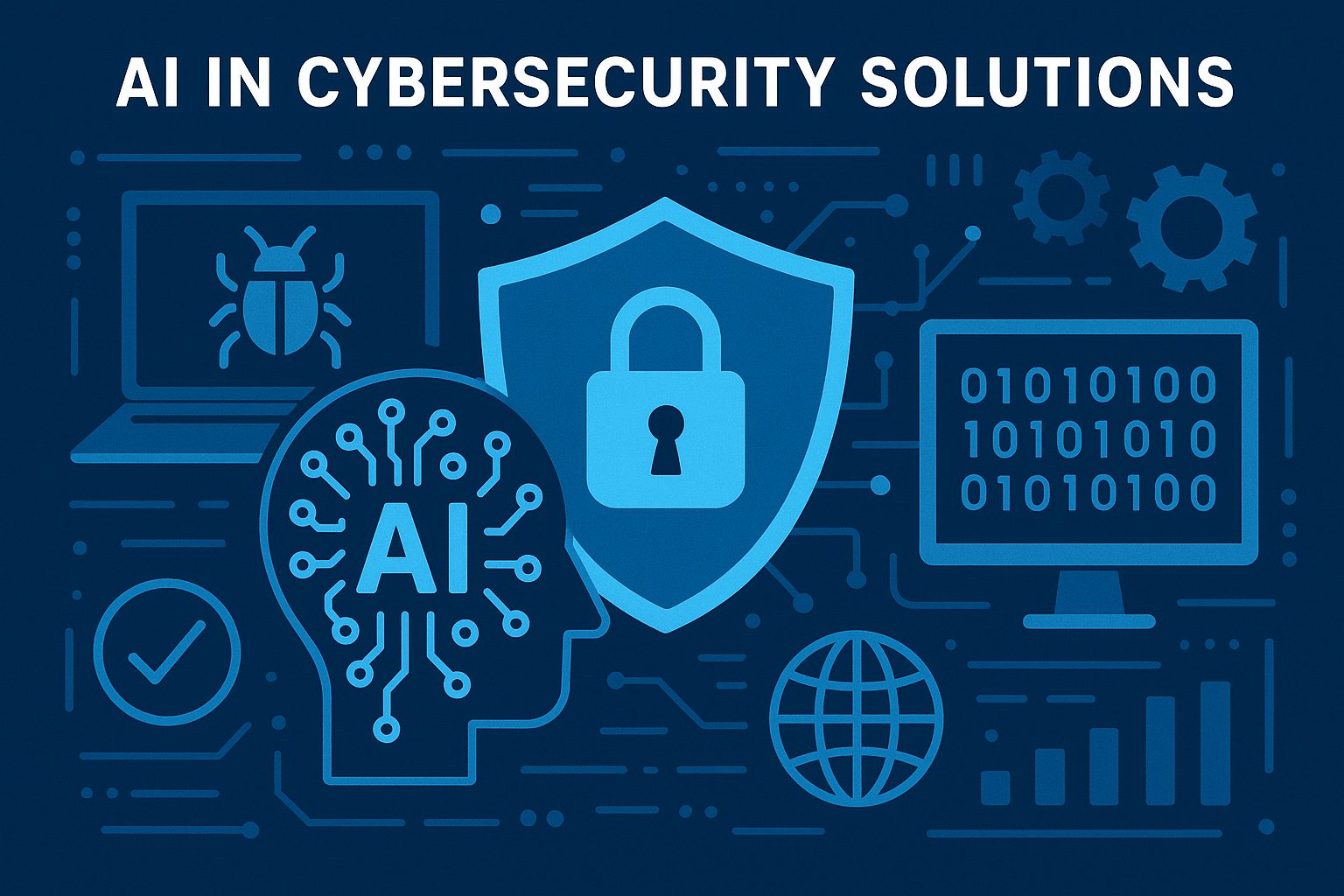
Artificial Intelligence (AI) is rapidly changing the landscape of cybersecurity by offering smarter, faster, and more adaptive methods to detect and respond to cyber threats. With the rise of complex attacks such as ransomware, phishing, and advanced persistent threats, traditional security tools are struggling to keep up. AI-driven cybersecurity solutions have become essential for protecting modern digital environments, improving detection rates, and reducing human error across industries.
The Role of AI in Modern Cybersecurity Defense
AI plays a crucial role in strengthening modern cybersecurity defense systems. Unlike traditional security programs that rely on predefined rules, AI systems continuously learn from new data, adapting to emerging cyber threats in real time. This ability allows AI to recognize patterns in network traffic, user behavior, and system anomalies that might indicate malicious activity. As a result, security teams can act faster and with greater accuracy.
Another benefit of AI in cybersecurity is its ability to automate routine tasks. Manual threat monitoring and log analysis can be time-consuming and prone to human error. With AI, organizations can automatically filter false alerts, analyze massive volumes of data, and focus their attention only on genuine risks. This allows cybersecurity experts to save time and respond to critical incidents more effectively.
Moreover, AI enhances predictive capabilities within security infrastructures. By analyzing historical attack data and ongoing threat intelligence, AI models can forecast potential vulnerabilities before they are exploited. This proactive defense approach shifts the focus from reaction to prevention, making networks more secure and resilient against constant cyber threats.
How Machine Learning Detects Cyber Threats Faster
Machine learning (ML), a key branch of AI, has become an essential technology in speeding up threat detection. It works by teaching algorithms to recognize normal and abnormal behavior using large datasets. Over time, ML models learn what suspicious activity looks like, such as unusual login attempts, rapid data transfers, or abnormal system behavior. This allows the system to quickly flag potential cyberattack indicators before they cause harm.
One major advantage of ML in cybersecurity is its ability to handle big data at incredible speeds. Today’s digital systems generate enormous amounts of traffic and log data, which human analysts cannot manually review in real time. ML systems can process this information instantly, detecting risks within seconds. This speed makes a huge difference in stopping attacks before they spread across a network or compromise sensitive data.
Machine learning also reduces false positives, improving the efficiency of security teams. Instead of spending hours investigating harmless activity, analysts can focus on verified threats identified by ML algorithms. As these algorithms continue to learn from each new data point, their accuracy improves, ensuring that organizations remain protected against both common and advanced cyber threats.
The Future of AI-Powered Security Protection
The future of cybersecurity will increasingly rely on AI-powered protection systems capable of autonomous response. These systems won’t just detect attacks – they will automatically contain threats, isolate infected devices, and even patch vulnerabilities without waiting for human intervention. This kind of self-defending network will be critical as cyberattacks become more sophisticated and fast-moving.
AI will also play a larger role in identity protection and threat intelligence sharing. Using advanced behavioral analytics, AI systems will continuously monitor user identities to detect anomalies that could indicate insider threats or stolen credentials. At the same time, AI will allow for greater collaboration between organizations by analyzing and sharing threat information instantly across global networks.
However, as AI grows more powerful, attackers are also starting to use AI for malicious purposes, such as developing smart malware or generating realistic phishing messages. Therefore, future cybersecurity strategies must include measures to secure AI itself. Combining human expertise with AI-driven automation will create the most balanced, effective, and evolving line of defense against digital attacks.
AI is transforming cybersecurity from a reactive system into an intelligent, proactive shield against evolving digital threats. By leveraging machine learning, data analytics, and automation, modern cybersecurity solutions are becoming faster, smarter, and more capable of predicting attacks before they happen. As both threats and technologies continue to evolve, embracing AI-powered defenses will be essential for maintaining digital safety and ensuring a secure future for businesses and individuals alike.

Leave a Reply